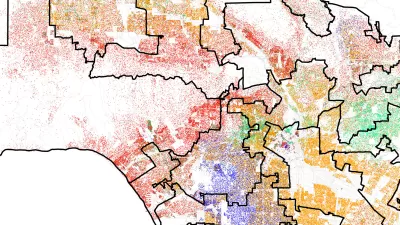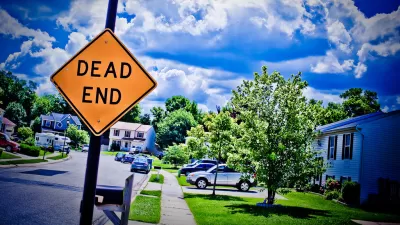2010 Census offers telling evidence of America's shifting demographics. Diana Olick of CNBC contextualizes the new U.S. household data in terms of real estate development.
Once accounted for 75% of U.S. households in 1960, the number of married couples is now less than 50%, according to a report by Chris Porter of John Burns Real Estate Consulting. This figure corresponds to the increase of non-family households, which skyrocketed from 7.9 million half a century ago to 39.2 million today.
To the extent that the downsizing trend will affect the future housing market, "[f]amily households are more likely to stretch for size over location. Non-family households are more likely to value location-proximity to work, entertainment, etc.-and then size. They are less willing to commute than a family household," writes Porter.
Olick elaborates, "With fewer large family households and less desire for a big space, smaller, full-service rental apartments are more desirable to a growing segment of the population. Obviously there are and always will be large families in the suburbs who want to live in big houses. There will always be wealthy Americans who desire to live in spaces that far exceed their needs. But the shift in household size cannot simply be considered anecdotal."
FULL STORY: US Household Shifts Could Impact Housing Recovery

Manufactured Crisis: Losing the Nation’s Largest Source of Unsubsidized Affordable Housing
Manufactured housing communities have long been an affordable housing option for millions of people living in the U.S., but that affordability is disappearing rapidly. How did we get here?

Americans May Be Stuck — But Why?
Americans are moving a lot less than they once did, and that is a problem. While Yoni Applebaum, in his highly-publicized article Stuck, gets the reasons badly wrong, it's still important to ask: why are we moving so much less than before?

Using Old Oil and Gas Wells for Green Energy Storage
Penn State researchers have found that repurposing abandoned oil and gas wells for geothermal-assisted compressed-air energy storage can boost efficiency, reduce environmental risks, and support clean energy and job transitions.

Greening Oakland’s School Grounds
With help from community partners like the Trust for Public Land, Oakland Unified School District is turning barren, asphalt-covered schoolyards into vibrant, green spaces that support outdoor learning, play, and student well-being.

California Governor Suspends CEQA Reviews for Utilities in Fire Areas
Utility restoration efforts in areas affected by the January wildfires in Los Angeles will be exempt from environmental regulations to speed up the rebuilding of essential infrastructure.

Native American Communities Prepare to Lead on Environmental Stewardship
In the face of federal threats to public lands and conservation efforts, indigenous groups continue to model nature-centered conservation efforts.
Urban Design for Planners 1: Software Tools
This six-course series explores essential urban design concepts using open source software and equips planners with the tools they need to participate fully in the urban design process.
Planning for Universal Design
Learn the tools for implementing Universal Design in planning regulations.
Heyer Gruel & Associates PA
City of Moreno Valley
Institute for Housing and Urban Development Studies (IHS)
City of Grandview
Harvard GSD Executive Education
Salt Lake City
NYU Wagner Graduate School of Public Service
City of Cambridge, Maryland





























